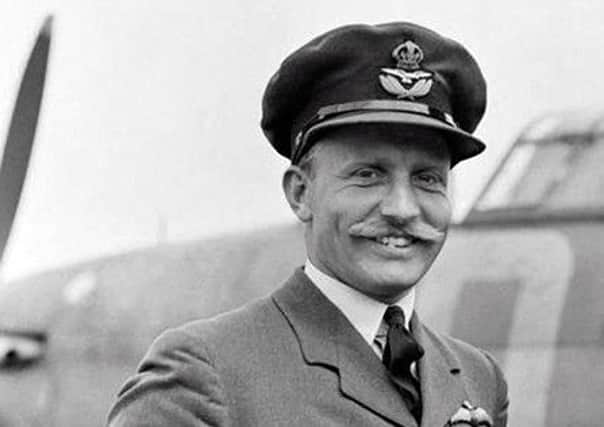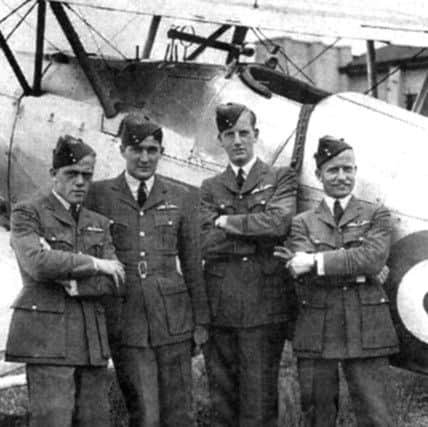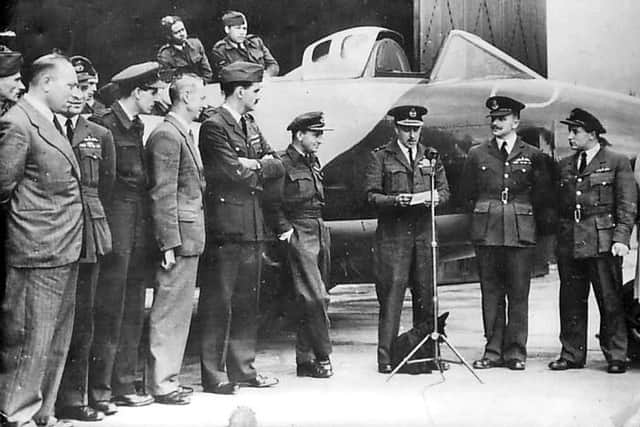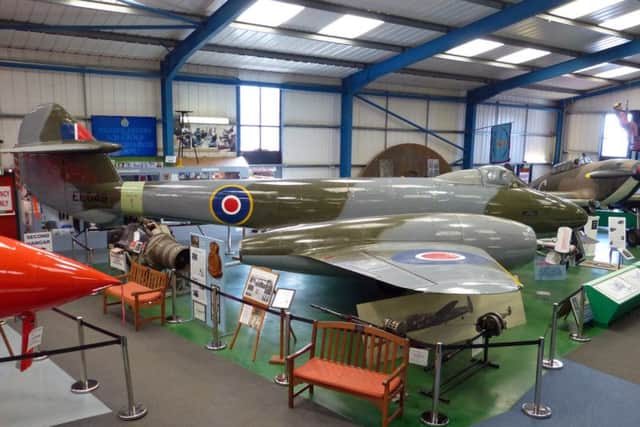Meet '˜Teddy' Donaldson '“ record breaker
This article contains affiliate links. We may earn a small commission on items purchased through this article, but that does not affect our editorial judgement.


He joined in 1931, his first posting being to No 3 Squadron where he flew Bristol Bulldogs. In early 1937 he was tasked with reforming No 72 Squadron at RAF Tangmere with Gloster Gladiators.
However, when the squadron moved to Church Fenton, he remained at Tangmere as a flight commander in No 1 Squadron where he immediately set about forming a formation aerobatic team consisting of four Hawker Fury aircraft.
Advertisement
Hide AdAdvertisement
Hide AdFrom No 1 Squadron he moved to the Central Flying School and, having qualified as an instructor, returned to operational flying with No 151 Squadron. When the squadron re-equipped with Hurricanes he was promoted to squadron leader and appointed as commanding officer.


His short operational career in the Second World War resulted in five confirmed victories with one shared, three unconfirmed and one enemy aircraft damaged. Later, he published a frank account of what it was like to be one of the ‘Few’.
He wrote: “In those days, we had no limited tours of duty such as was rigidly enforced later. We went flying until we were either maimed or killed – or promoted.”
Promoted wing commander in August 1940, he became a chief instructor of a flying school and then set up four gunnery schools in America to teach combat techniques to the United States Army Air Force. Towards the end of the war, as commanding officer of RAF Colerne, he commanded the first wing of Meteor jet fighters in the RAF.
Advertisement
Hide AdAdvertisement
Hide AdImmediately after the war the RAF decided to recapture the world airspeed record with its new generation of jet aircraft. Group Captain Donaldson was appointed to command the RAF’s high speed flight based at RAF Tangmere where he announced his intention “to raise the record to 621mph at least”.


Two other pilots were posted to the flight; Squadron Leader WA Waterton from the Central Flying Establishment and Flight Lieutenant Neville Duke who was half way through his test pilot’s course at the Empire Test Pilot’s School, Cranfield. Based at Tangmere, it was decided the attempt should be made over a 3km course off the Sussex coast at Rustington, near Littlehampton.
On Saturday September 7 1946 a break in that summer’s poor weather arrived and at 17:45 hours Donaldson took off from Tangmere in Gloster Meteor EE 549 to make the most of it. He landed back 14 minutes later having returned an average speed of 615.78mph over the course – a new world record.
However, Teddy Donaldson’s record was the limit the High Speed Flight could achieve in the conditions they experienced during that late summer of 1946.
Advertisement
Hide AdAdvertisement
Hide AdIf they had found smooth air and higher temperatures there is no doubt that Donaldson’s intention of achieving at least 621 mph could well have been achieved.


Donaldson became Senior Air Staff Officer, No 12 group between 1946 and 1949 and then after further senior appointments was promoted air commodore and became commandant of the RAF Flying College at Manby.
He retired from the RAF in March 1961 and became Air Correspondent for the Daily Telegraph until 1979.
He died in June 1992 and is buried in St Andrew’s churchyard, Tangmere.
Advertisement
Hide AdAdvertisement
Hide AdThis article, written by David Coxon, Tangmere Military Aviation Museum’s Curator, is the 41st in a series of monthly articles on the people of RAF Tangmere. More information on the Museum, including opening times and entry prices can be found at www.tangmere-museum.org.uk.
Don’t miss out on all the latest breaking news where you live.
Here are four ways you can be sure you’ll be amongst the first to know what’s going on.
1) Make our website your homepage at www.chichester.co.uk/
2) Like our Facebook page at www.facebook.com/ChichesterObserver
3) Follow us on Twitter @Chiobserver
Advertisement
Hide AdAdvertisement
Hide Ad4) Register with us by clicking on ‘sign in’ (top right corner). You can then receive our daily newsletter AND add your point of view to stories that you read here.
And do share with your family and friends - so they don’t miss out!
The Chichester Observer - always the first with your local news.
Be part of it.